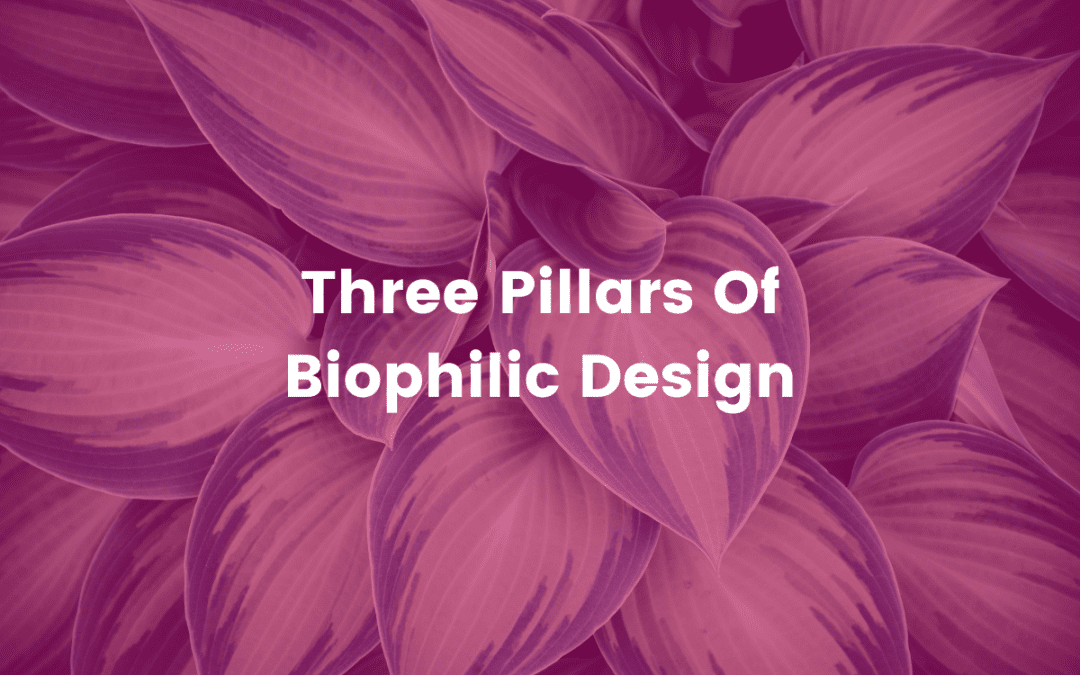Have you ever been in nature and felt an overwhelming sense of calm and tranquillity? That’s because nature has a calming effect on us humans – and biophilic design aims to bring that peace into our everyday lives. By bringing nature and the built environment together, biophilic design brings nature to us, helping boost creativity, increase happiness, reduce sickness and more.
We’ve previously spoken about what makes biophilic design unique and something we’re so passionate about. But what principles make biophilic design? Can you add some potted plants and call it a day? Of course not. Let’s learn together.
1. Bringing nature into space
The first principle of biophilic design revolves around bringing nature into your space. This refers to adding natural elements into the built environment.
This is perhaps the simplest way to introduce biophilia to the workplace or living space and gives people instant access to all the feel-good associations of biophilia.
Views of nature from the inside of the building, natural light, and direct access to nature like courtyards, gardens and roof terraces planted with greenery, also fall into this category. These direct connections to nature have the strongest impact on us as humans.
2. Mimicking nature wherever possible
Not every building can be designed with biophilic design in mind – and many historic buildings, which were built for different purposes than modern living, need ways to update their space with biophilic benefits in mind.
This concept refers to man-made elements that mimic nature. Artificial plants, preserved moss walls, representational artwork, patterns and architecture that evoke nature are all examples of natural analogues. These are ways biophilic design can be used to clone nature’s benefits indoors.
Furniture with organic rather than geometric shapes. Woodgrain and building materials mimicking shells and leaves used in interior and exterior decoration are all excellent illustrations of the use of natural analogues.
Many benefits can be reaped from including natural analogues in a space, including reduced stress levels, increased feelings of well-being and improved levels of productivity.
3. Bringing architecture and nature together
Biophilic design goes hand in hand with architecture and building design.
This concept explores how the organisation of space and architectural design influences our physiological responses and human emotions. Over time, our evolution has shaped our ability to connect with nature, a trait that has played a significant role in our survival.
We naturally seek out environments that promote our well-being and foster exploration. Thus, landscapes resembling the savannah, with their vast horizons, sweeping meadows, and water features like lakes or oceans, really appeal to us.
Biophilic design is ideally achieved by working with architects to create nature-rich spaces from the design stage onwards. As our understanding of this subject deepens, it guides decision-makers in workplace management, design, and construction toward creating more joyful and healthier spaces in the future.
Utilising biophilic design principles can help in many areas of life and business, including upping footfall and raising your average spend per customer in turn.
Biophilic design is not just a passing trend; it’s a transformative approach to creating spaces that benefit both people and the planet. By integrating natural elements, materials, and concepts into interior design, businesses across all industries can unlock the potential for healthier, more productive, and inviting environments.
Find out more
We are botanical experts with a deep interest in creating beautiful spaces which use the power of plants to help people feel happy and perform at their best. If you’re interested in working with our team, get in touch.
To find out more, keep an eye on our Instagram and sign up for our newsletter here for up-to-date information as well as pictures of our latest work.

